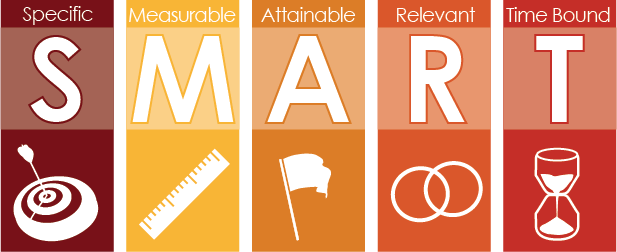6 Setting SMART Goals

A common tool for effective goal setting is developing SMART goals. Writing SMART goals are a way to encourage you to create goals in a way that inspires you to make them happen.
SMART Goals Are
“S” – Specific
Your goal should clearly define what you’re going to accomplish. You’ll ask and answer the what you’re working toward and why.
“M” – Measurable
Identify and define how you will measure progress toward reaching your set goal.
- How will you know when you’ve achieved your goal?
- When will your goal be finished? What is the due date?
“A” – Attainable / Action-Oriented
Goals need to be realistic and attainable within the time and resources that you have available. Is it possible for you to achieve your desired goal? You should be inspired to take action towards reaching your goal.
“R” – Relevant
Relevant and realistic goals are ones you’re willing to complete. You should identify where this goal will take you. A goal can be both ambitious and realistic; you’re the only one who can decide just how high your goal should be.
“T” – Time Bound
You need to create a sense of personal urgency by setting times for each step along the way. Knowing when you have to finish a task keeps you on track and accountable. [1][2]
- When does something need to be done?
SMART Goal Example
Consider this example. You could say that your goal is to become a better runner. This goal is undefined, and you will not be able to tell when you’ve achieved it.
A SMART goal would be, “You will train with a running group twice weekly and complete a ten kilometer run in under one hour by the end of June”. This goal is time-bound and includes specific and measurable criteria that will help you know when you’ve reached your goal.
Try it!
Begin to set your learning goals for this semester. Choose 1 goal, and use the SMART goal system to make your goal relevant and achievable.


Feedback/Errata